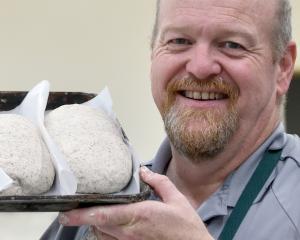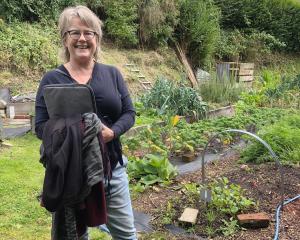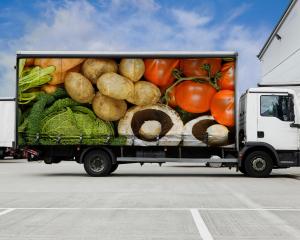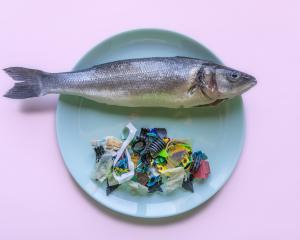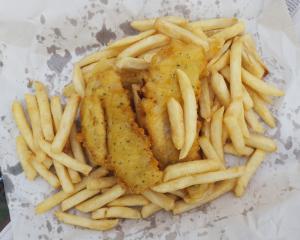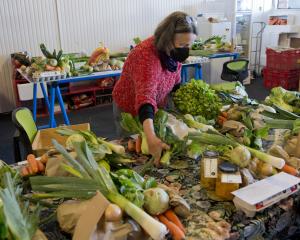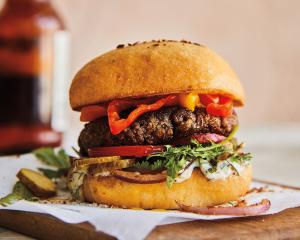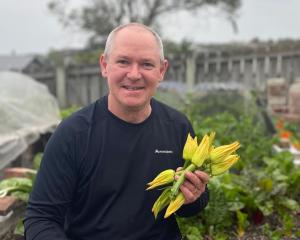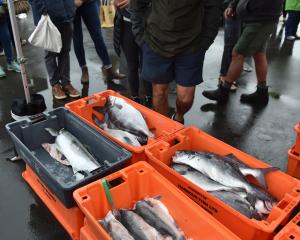Collecting so many is the result of an insatiable interest in food, its origins and what and how different cultures cook and eat.
I started young, writing some of my mother’s recipes in an exercise book. A favourite was a sandwich filling of finely chopped onion and tomato softened in butter, flavoured with curry powder and stirred with an egg that bound it together - quick, easy, cheap and in those days had suggestions of the exotic and elegance if you presented it in little tarts or tiny sandwiches garnished with parsley.
When I went flatting as a student, someone told me I should get an Edmond’s cookbook but it had mostly baking and pudding recipes rather than dishes you might cook for your flatmates.
A little later I collected the Cordon Bleu series and worked through many of the recipes, learning how to make stocks, sauces, croissants and other examples of haute cuisine - the sort of thing one aspired to serve at dinner parties in the 1970s.
But my enthusiasm for food really blossomed when I discovered Elizabeth David and Jane Grigson, iconic British writers who espoused both flavour and tradition. The former introduced war-weary cooks to the joys of Mediterranean food and the latter to the rich history of British food. If that sounds like a contradiction in terms it isn’t. Like any culture there was a wealth of country dishes in Britain, many flavoured with herbs and spices.
My copy of Grigson’s Vegetable Book is much used - a mine of information, history and recipes for almost any (temperate climate) vegetable you can think of.
David and Grigson were among the ground-breaking authors published by Penguin in the 1970s and ’80s that influenced a generation of curious, innovative cooks. They weren’t the glossy illustrated books that are de riguer today but food for hungry minds, paperbacks filled with fascinating information about the cultural and gastronomical history of the food or recipe - books to read as well as inspire and cook from.
Like many of my generation I found these seriously addictive, collected most of them and still value them. Most of these wonderful cookbooks celebrated “cucina povera”, traditional, flavoursome foods country people cooked from local ingredients.
A particular favourite was an early edition of Claudia Roden’s A Book of Middle Eastern Food which I bought when we were on our OE and about to go and live in Iran for a while (before the revolution that brought in the ayatollahs).
It was an invaluable guide to the range of spices, vegetables and fish available in the markets there and how they were cooked locally. Living on the Persian Gulf, we relished flatbreads fresh from the tandoor, shrimps and other fish landed on the beach, and the market vegetables brought from a nearby oasis. My love of Middle Eastern food stems from this time. However, an English woman, the wife of a colleague of my husband and a seasoned ex-pat, longed for white bread, chops or cuts of meat she could roast, and bought frozen foods whenever she found them, despite the substantial risk they had probably been thawed and refrozen several times.
Alison Holst became a staple of New Zealand kitchens. Her two big books, The Best of Alison Holst and The Ultimate Collection, proved useful for looking up things like grapefruit marmalade or a variety of muffin recipes.
In the 1990s Lois Daish, Julie Biuso and Annabel Langbein were among my favourites.
American chef Alice Waters of Chez Panisse restaurant in Berkeley, California was also an inspiration, particularly for her farm-to-table philosophy, but I have to admit not generally being a fan of American cookbooks, despite having trawled through copies of Julia Child, the classic The Joy of Cooking and others.
When I was ODT food editor many cookbooks came over my desk, most claimed by their promoters to be a new style that would capture the public’s imagination and recipes that really worked. Some I devoured with pleasure - Nigel Slater, Hugh Fearnley-Whittingstall, the young Jamie Oliver, Diana Henry, Yotam Ottolenghi and Madhur Jaffrey.
Roden continued to be a favourite - I even had the privilege of interviewing her when she visited New Zealand. She has continued to produce encyclopedic books such The Book of Jewish Food and The Food of Spain which I often cook from.
Some writers seem to have got on the bandwagon of producing a new cookbook every year - far too many to use, and in many cases more or less repetitive. Now it seems many cookbooks have little purpose but to entice the reader to salivate over the gorgeous photography and aspire to a place on the coffee table rather than being used in the kitchen where they get dusted with flour or have something spilled on them.
There is a growing genre catering to specialist diet trends from plant-based to keto, paleo, sugar-free, wheat-free, low carb and so on. Some use substitutes which may or may not have similar nutritional, flavour or textural qualities to the real food.
Many of my cookbooks live in the basement and are only occasionally referred to, if at all. Several hundred are in my study, but a couple of dozen live on the bench in the kitchen. They are my go-to for inspiration when I’m looking for something to do with what’s in the fridge, the garden or what I’ve bought at the market.
I can’t imagine being restricted to only one cookbook but if I was, it would have to be Australian Stephanie Alexander’s encyclopedic The Cook’s Companion, first published in 1996 and updated several times since. With information about ingredients, their seasonality, how to prepare them, what flavours go well with them, recipes and cross references, it’s a massive tome.
It could be argued that cookbooks are no longer needed with the glut of food bloggers and recipes online, not to mention the television food programmes that make instant if usually ephemeral stars of winners. But we still love them and thousands are published each year. Not only are they inviting to handle and usually full of gorgeously photographs, but if they are good you get to know the author’s style and feel you can trust them.
I love the tactile delight of a well-designed book, whether cookbook or other. The excitement of flicking back and forth through the pages, stopping at something that catches the attention, anticipating the pleasures to come when you settle down to read it - or in the case of a recipe book, make and eat the food.
The internet can’t really match this delight, although it can also be useful. I enjoyed an Anzac biscuit with dates and raisins in a cafe a while ago and found a couple of recipes online. One turned out to be good and it’s become a regular in my kitchen.
One problem of having too many cookbooks is finding your favourite recipes - which book were they in?
I’ve partially solved this problem by copying or scanning my favourites from books or the web into a recipe database - I use Macgourmet. I can access them anywhere, on my phone, tablet or computer, and if someone wants a copy I can send it with a touch of the screen.
But I still wouldn’t be without my favourite cookbooks.
